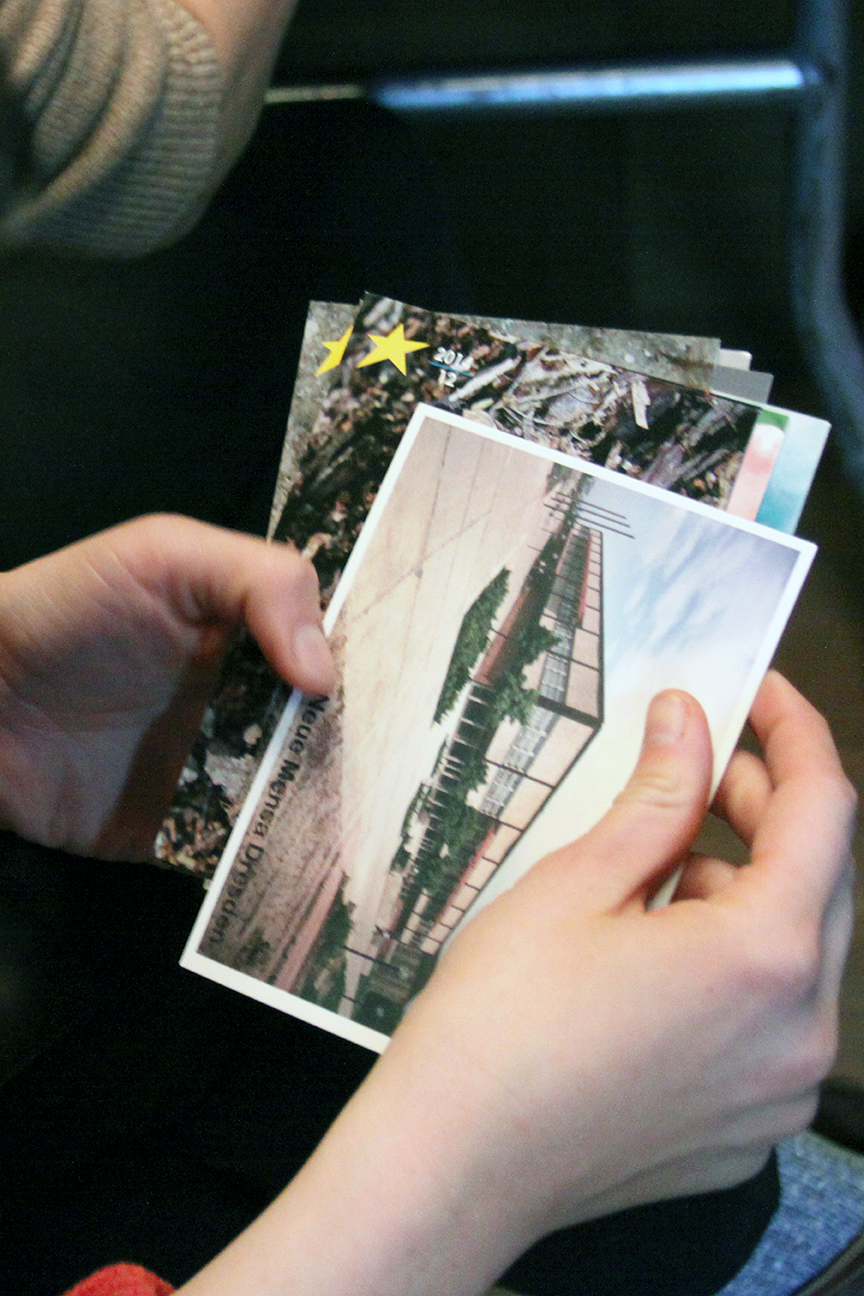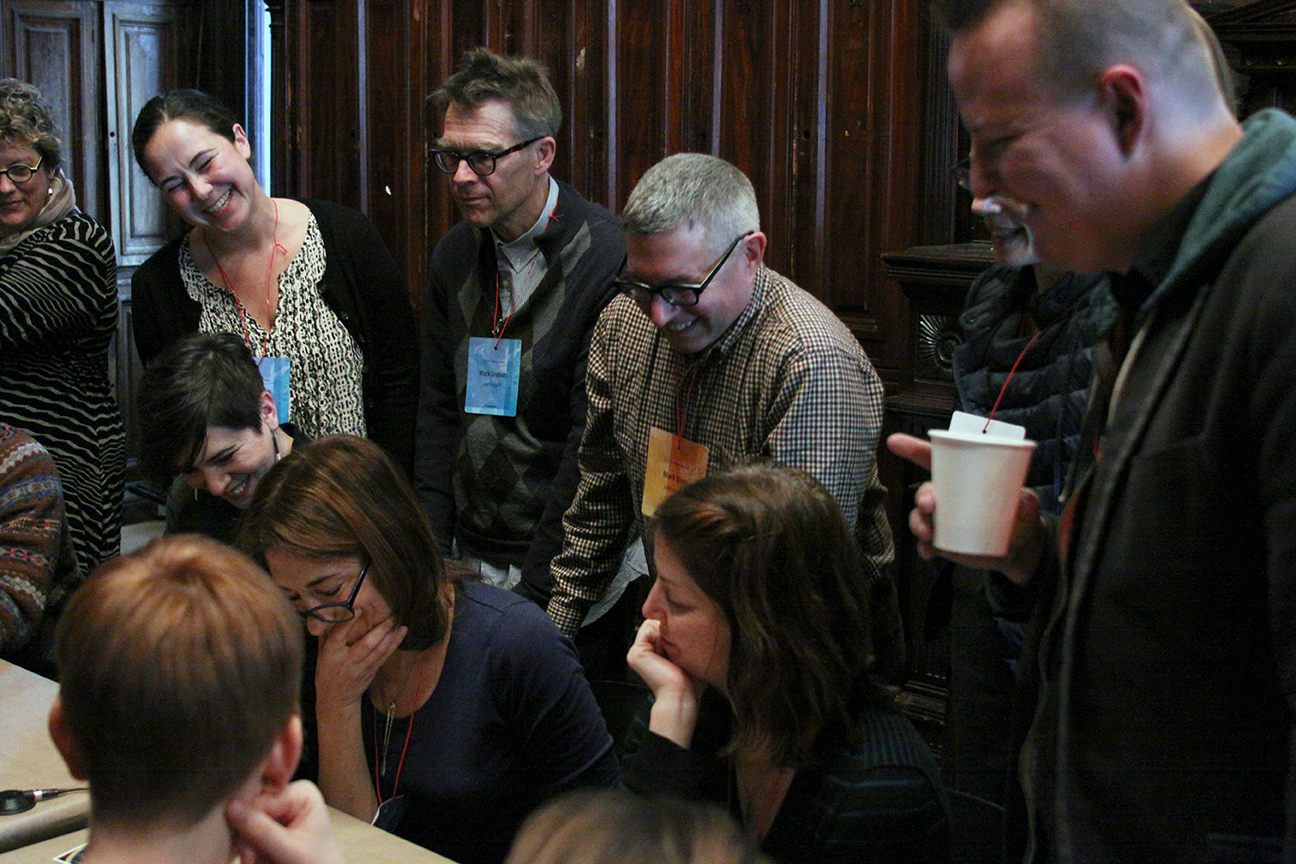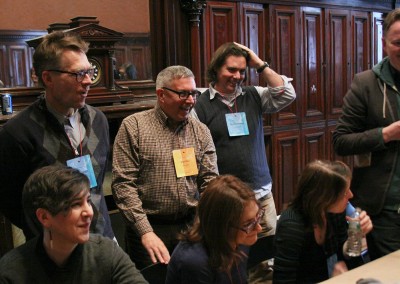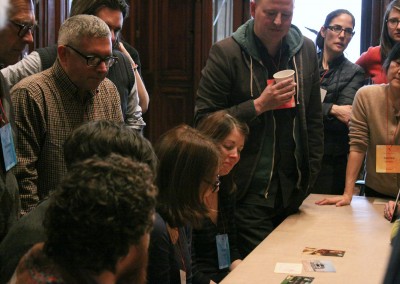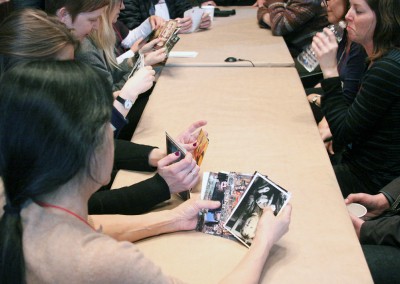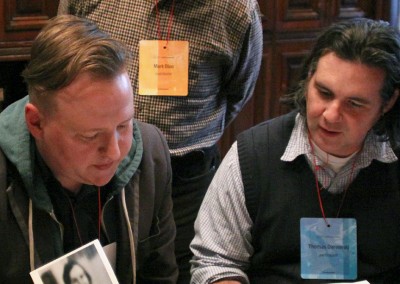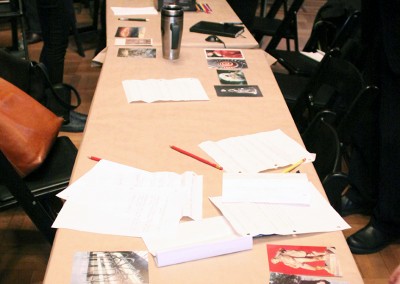Postcard Parlor Games
Experiment
Don Ball, Head of Visual Arts, Cawthra Park Secondary School; ART21 Educator — Mississauga, Ontario
Mark Dion, Artist — New York, NY
Using postcards from the extensive collections of Mark Dion and Don Ball, participants were led in a series of three games focused around creative expression and interpretation. Similar to the well-known game Apples to Apples, participants began by dividing into two groups: one created categories and the other chose postcards that they thought best illustrated the categories that were assigned. All participants then voted on a postcard to win each round, but could ask for clarification or a creative explanation about what the image represented.
The second game took a more personal turn when all participants were asked to choose one postcard that appealed to them. They then wrote down words that they associated with the image they’d chosen, and then did the same for five postcards chosen by other members of the group. Each time a participant received a new card to consider, the paper was folded back so that she couldn’t see the words already written. From this new collection of collaborated words, each participant selected their favorite from each contributor and combined them into a poetic response describing, interpreting, or providing a story for the original postcard they’d chosen.
In the third game, each participant selected a postcard, and then joined with others to curate a mini-exhibition among all the cards they’d chosen. The small groups of two or three discussed why they’d chosen each card, what the relationship was between the images, and why they liked them. Participants flexed their curatorial and persuasion skills before presenting their final collections to the group.
“We began with a formal game led by Mark Dion – opposing teams, limited number of vintage postcards per person. Opposing participants generated a category (angry daughter, the birth of psychoanalysis, a perfect meal), and each person holding a stack of postcards had to choose their most appropriate card… After several rounds, the postcards to select from were depleted, and it became necessary to talk up a postcard choice that might really have no connection to the theme at all…
People talked about art, and ideas, and provided proof and evidence of their thinking through play, collaboration, competition, and choices of images.
Mark approached the session with his very prescribed game. Teams, rules, timelines, go!
He was very clear about what he needed, how he needed the tables in the room arranged, and how it would all work. It was important to him that there be a second round, as the dynamics would shift, and they did.
In planning email exchanges, he acknowledged that I might talk about something else I do with postcards in a high school art classroom… We agreed we’d start with his game, then activities from my classroom, then a combined effort. On the day, we chose to expand a curating assignment that I have used with postcards, to include the Dion collection of non-art postcards that document things of interest with the Ball collection of contemporary art postcards. This became more free flowing and connected our two approaches to postcards, collecting and utilizing, nicely.
Mark began in a much more instructive fashion, me in a more investigative way.
Participants seemed to like to see us playing with, using, and sorting through our cards at the end, and several had stories to tell about postcard collections of their own.”
—Don Ball




